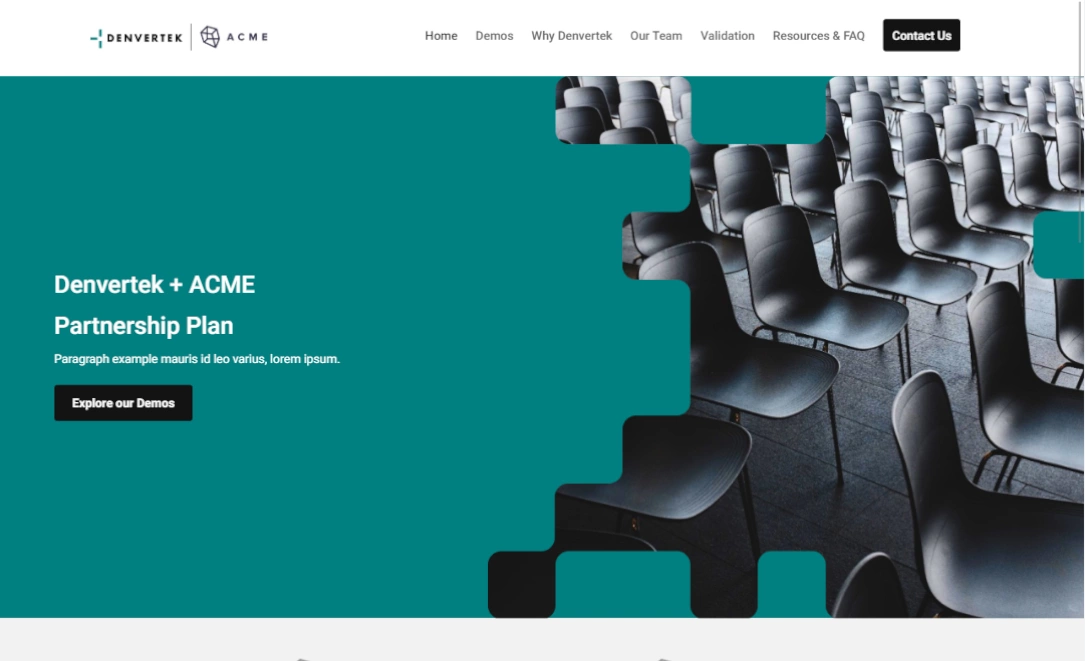Looking to create a content experience that elevates your communication and marketing strategies but you aren’t sure where to start? A microsite could be the answer! Creating a microsite is the perfect way to create highly specialized, immersive content that helps you target a niche audience.
Microsites are becoming the new trend for companies, so there isn’t a lot to go on when it comes to microsite strategy. Zoomforth is the expert in this domain (pun intended), and these five guiding questions will help you start designing a microsite in no time.
5 questions to ask when creating your microsite
What is the purpose of your microsite?
The first thing you have to figure out is why you’re creating a microsite in the first place. Understanding this is the core of all decision-making you’ll make going forward. Think of it as planning backward. By starting with the action items or results you want to see from your users, you can fine-tune the content experience you are creating on your microsite.
While all microsites should strive to be highly engaging and information-rich, the way you deliver those experiences will vary depending on your goals. It will affect the branding content you choose to incorporate into your design and help you determine which CTA’s are most effective.
There are plenty of use cases for a microsite, but here are a few ideas.
Create compelling sales proposals that highlight your products and services. A microsite puts your proposal center of its design, immediately moving users to access key information. The proposal uses space and contrast to make information easy to navigate. All CTAs are simple but directive, helping users move from one part of the proposal to the next.
An onboarding microsite strikes the right balance between information-rich and welcoming. Featuring a welcome video instantly gives new hires something to interact with. An easy-to-navigate and clearly labeled top menu directs users to the information they need to find. Keeping information on one page makes it easy for employees to find information no matter where their eyes, or fingers, wander.
How about a learning and development initiative? Offering growth opportunities to your staff can feel overwhelming, but information overload is easily avoided with a microsite. It corrals informational videos in one spot and uses brightly colored buttons to help direct users to the content they need. Less relevant information, like testimonials and course reviews, is left at the bottom of the page to keep attention focused on what matters most.
Who is the target audience for your microsite?
One of the greatest advantages of using a microsite is the ability to create highly targeted material. Microsites offer a unique opportunity to create immersive web experiences that cater to a single audience. Though you may be targeting the same behavior for a range of audiences, some delivery methods will work better for certain audiences than others.
Age can impact aesthetic preferences, tone, and linked features. While you should generally strive to cast a wide net, if you know your microsites audience is largely one age demographic over another, being intentional about what elements of design you include doesn’t hurt! Here are some tips for designers who want to keep age in mind:
- Facebook is the more popular linked social media platform for older users, while Instagram and Twitter cater to younger demographics.
- Video-based content is popular across all age groups.
- Niche language and jargon might keep specialized audiences engaged, but it can isolate others if you are looking to create a more general, user-friendly microsite.
Understanding your audience’s role can help pinpoint interests, as different stakeholders may value certain features over others. IT staff may appreciate more cut-and-dry graphics and statistics, while a buying team may seek out testimonials and value propositions. If your microsite is for a general team, keep the commonly sought information at the focus with clearly linked subpages that are easily accessible.
Knowing whether your microsite is for experts or beginners is the perfect way to tailor the experience you create on your microsite. Incorporating information-rich learning material that is relevant to users is the difference between providing what’s needed to move someone to action and not. Use videos, infographics, or incorporate polls to keep users of all levels of expertise engaged.
What key analytics would you like to evaluate?
You’ll need to identify specific metrics to gauge how successful your microsite ends up being. That’s why it’s important to figure out the analytics you’d like to evaluate as key performance indicators of the microsite’s success. Plus, you can keep these analytics in mind when you start designing.
In part, this goes back to identifying the purpose of creating your microsite. Analytics are data points that tell you about what action your target audience is taking while on your microsite. An action-oriented goal that seeks to increase sales or gather information will need different analytic measures than a microsite that strives to be an immersive content experience.
Luckily, the right microsite builder returns micro and macro level analytics so that you have insight into:
- Who is accessing your microsite and when
- What content was most engaged with, and how long users engaged with it
- What documents were downloaded
- Who the microsite was shared with
What kinds of content would be relevant for the microsite?
Narrowing your content is the best way to keep content focused and user-specific. It’s best to have a wealth of content to pull from when designing your microsite, but you’re only going to use the content that achieves your goals.
Start with core content. The information or experiences that users will be most interested in should be the focus of your microsite. From there, identifying potential gaps in understanding, experience, or expertise will help you determine what supplemental information and content are necessary. Organizing this content in a way that is navigable but still accessible is essential to making it useful.
One helpful way to identify what content fits in where is to consider a visual hierarchy. This approach revolves around the idea that not all content is read or engaged with equitably. Users may read, skim, or ignore the information presented to them, so prioritizing which information is most deserving of each action can help you determine how to structure content or repackage it to be more consumable.
There are user design principles that specifically address people’s behavior while reading. These behaviors are broken down into reading patterns that serve different purposes and address different reader goals:
- The “Z Pattern” is optimal for minimal content and scannability. It typically targets a specific CTA.
- “Layer-Cake Pattern” uses structured and predictable formatting so that users can easily skim headings for relevant information.
- If you have dedicated readers who are looking for dense, information-rich content, the “Commitment Pattern” may be for you!
How will you host your microsite?
Unlike traditional landing pages, a microsite serves as a highly specialized and targeted webpage. With that in mind, making it accessible to your target audience is crucial in ensuring you see a return on your invested time and careful planning.
You may choose to host your microsite on the same domain as your company’s main website or opt for a specialized domain through a microsite platform. Creating a specialized domain clues your user in on what they can expect from their experience.
Questions to ask after you roll out your microsite
What content worked and what flopped?
Microsites are incredibly malleable, and robust analytics allow you to make the most of the different features and content you choose to include. Conducting a careful audit of analytics after your microsite launches allows you to eliminate the guesswork involved in improving or revisiting content.
Plus, meaningful and easy-to-use analytic tools allow anyone on your team to make sense of the information they have. That way, improvement is a collaborative effort that everyone gets to participate in, whether they identify as “web experts” or not.
What do you want to keep?
Microsites are notoriously used for immersive content experiences. While the purpose they serve may be to create content that temporarily bumps engagement or recognition, you may be surprised by the numbers they return!
Embracing strategies, branding, or content that works with your permanent marketing strategies is just one of the added benefits of creating targeted microsites. Be sure to determine if your microsite content has facilitated a connection with untapped markets, as you may deem it worthwhile to build on similar content!
Your questions can be answered at Zoomforth
Emmert Wolf once said, “an artist is only as good as his tools.” This saying holds especially true when it comes to microsite design! Using the right platform to help you roll out well-crafted microsites makes all the difference.
Zoomforth’s intuitive drag-and-drop design platform makes it possible for anyone to build a microsite, coder or not. Plus, advanced and easy-to-use analytic features show you the return on your investment without the guesswork. Our experts are available 24/7 to help you make the most of our features and our website is chock full of resources for the self-directed learners on your team.
Ready to see what building a microsite with a leading microsite building platform is like? Sign up for a demo today!



